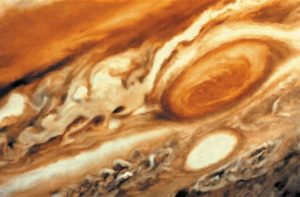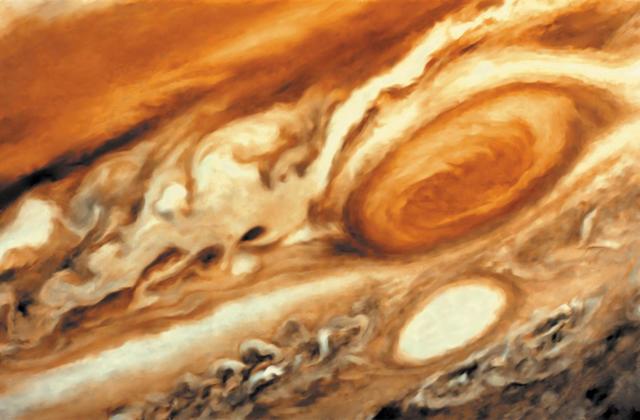
Water Evidence Found At Jupiter’s Great Red Spot: NASA
Called as the Jupiter’s Red Spot, a storm that has been characteristic of being violent and intense on the plant of Jupiter for the past 350 years, according to NASA scientists, contains water above the planet’s deepest clouds when we look deeply into it.

The team was led by an Astrophysicist Gordon I.Bjoraker at NASA’s Goddard Spaceflight Center in Maryland, US, detected the chemical signatures of water above the planet’s deepest clouds, when they were looking from ground-based telescopes at wavelengths that are very sensitive to thermal radiation leaking from the depths of Jupiter’s persistent storm.
The pressure of the water when combined with carbon monoxide and another oxygen-bearing gas implies that the planet Jupiter has got two to nine times more oxygen than the sun.
All these findings support computer and theoretical-simulation models that have earlier implied that water is present on (H2O) on Jupiter, the scientists said.
“The moons that orbit Jupiter are mostly water ice, so the whole neighborhood has plenty of water. Why wouldn’t the planet – which is this huge gravity well, where everything falls into it – be water-rich, too?” Bjoraker said in a statement.
“The location of the water cloud, plus the amount of carbon monoxide that the researchers identified on Jupiter, confirms that Jupiter is rich in oxygen and, thus, water”, Bjoraker explained.
“Jupiter’s water abundance will tell us a lot about how the giant planet formed, but only if we can figure out how much water there is in the entire planet,” said Steven M. Levin, from NASA’s Jet Propulsion Laboratory in California.
The discovery was exciting because of the team’s experiment could have failed easily. The Great Red Spot is always full of dense clouds that makes it really hard for electromagnetic energy to escape and give an idea to the astronomers about the details.
“It turns out they’re not so thick that they block our ability to see deeply,” Bjoraker noted.
The fresh data will become a part of the information Juno spacecraft is accumulating as it circles the planet from north to south once for every 53 days.
If Juno is successful in returning similar water findings, it could help open a new window into finding a solution to the problem, said Goddard’s Amy Simon, who is a planetary atmospheres expert.
“If it works, then maybe we can apply it elsewhere, like Saturn, Uranus or Neptune, where we don’t have a Juno,” she said.
You May Also Read: Ealier It Was “Divide And Rule” And Now It Is “Divert And Rule”: Activists Think About BJP Govt